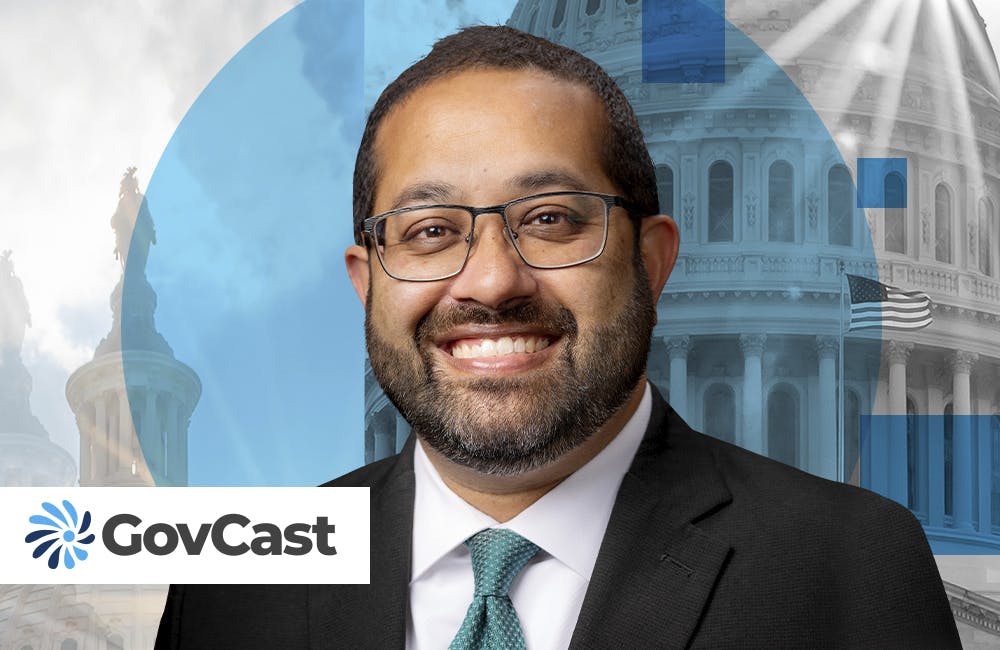VA Redefining Health Care Delivery Amid COVID-19 Pandemic
The agency is coupling API development with a focus on human-centered design to lay the groundwork for both current modernization and future initiatives.

Amid a focus on adapting to the COVID-19 pandemic and building out its emergency care network to care for a new influx of patients, the Department of Veterans Affairs is also looking on leveraging its technical capacities to improve care deliveries and outcomes in ways that will both aid the current public health crisis and persist after its resolution.
Speaking at the FedHealth IT Delivering a Human-Centered Design webinar, Veterans Affairs API developers discussed the measures they are taking to both build out the agency’s API capacities and apply them to newfound fields.
Discussing recent steps in data management, VA Director of Product Strategy Jason Glanville outlined how API development has helped safeguard data privacy while allowing developer partners to access the agency’s health information database. This has been a particularly notable project considering both the VA’s wealth of health data, as well as the necessary sensitivity required in handling patient information.
“We’ve made significant strides over the past year to aggregate this data through a trusted portal in a standard format so our veterans can then connect to these innovative solutions with their explicit consent,” he said. “What that means is that even if a developer partner is connected to the VA, they will only see the health information for the specific veteran from whom they’ve received explicit consent.”
Dave Mazik, lead developer behind the VA’s Lighthouse API program, emphasized the foundational importance of ensuring patient privacy and consent as the first step of broader data exchange.
“With nearly 9 million health care enrollees, you can imagine there is an immense amount of data and services available to our veterans,” Mazik said. “We wanted to make sure we opened a front door so veterans could control their own data in a safe and secure manner.”
Much of the API program’s early success has rested on electronic health records modernization, particularly in allowing remote access to newly digitized patient information.
“The industry thus far has been focused on providing digital access to health records for patients. It’s been our rule of law for many years … so that we don’t end up having to walk around carrying a stack of papers,” Glanville said.
The interoperability allowed by the Lighthouse program has also led to considerable improvements in patient experience, particularly in data storage and access that would have been arduous if not unfeasible prior to health records digitization.
Glanville discussed the experiences of his father, a Vietnam War veteran, who endured multiple concurrent health conditions in his later years that made it difficult to catalogue his health information on paper.
“His CMS and his [explanation of benefits] near the end were looking like a Danielle Steel novel. They were 80 to 120 pages,” Glanville said.
Being able to organize and access a complex roster of health information has proven to be one of the early successes of the VA’s API program, one that has already streamlined care for veterans nationwide.
“Providing that kind of direct access was a significant win for the industry,” Glanville explained.
Beyond its initial applicability for health records management, the VA’s API program has also shown promise for both advanced research and improving the delivery of telehealth during the COVID-19 epidemic.
“From a telehealth perspective in this current environment, we can use [health data] to proactively assess COVID risks either pre- or post-contracting the virus. As well as other research initiatives using artificial intelligence and machine learning,” Mazik said.
This ability to access and share data in ways that are both agile and respectful of patient consent has provided a foundation for novel research initiatives going forward, improving both health outcomes and delivery of care.
“Our product delivery and our product flexibility will be tremendously improved to help with the dynamic shift of health care. We’re looking at both COVID and beyond — as new disease states are identified, and for existing disease states where there might be a litany of common treatment plans. As we get smarter, and as machine learning and artificial intelligence prove new models for proactively treating conditions, we can then be not so much reactive as proactive to move with that shifting paradigm,” Glanville said.
Speaking at the FedLab Human-Centered Design Forum on June 26, representatives from the Veterans Experience Office discussed ongoing efforts to improve patient care through a similar attention to the design and structure of agency services. VA product designers were particularly keen to note the importance of refining care delivery commensurate with advances in data management.
In describing the agency’s design philosophy for apps and product development, VEO Chief Design Officer Erin Siminerio summarized this approach as, “Know who your audience is and to whom your information is tailored. Make sure you’re always aware of the ultimate purpose and the goal.”
VA Presidential Innovation Fellow Scott Weiss also emphasized the importance of iterative design processes that can be updated against both feedback from adjacent product teams while remaining responsive to technological shifts that can occur throughout a products design — allowing a more dextrous response to the emergence of new capacities.
“You want to be able to iterate and get [another team’s] feedback because oftentimes you’re at risk of tunnel vision if you only test it with each other,” he said. “You have to think about ways you can visualize and test what’s working and what’s not. It’s often an ongoing iterative process of weeks, months or even years depending on what you’re trying to design.”
TAGS
This is a carousel with manually rotating slides. Use Next and Previous buttons to navigate or jump to a slide with the slide dots
-

DOD Has a New Cyber Resiliency Assessment Program
Defense officials tout the continuous assessment feature and scalability of the new program amid increased cyber threats.
5m read -

Transitioning Systems for Modern Agency Missions
IT modernization is a constant process necessary for improving customer service, mission delivery and collaboration.
40m watch -

Cyber Resilience and Recovery Amid Evolving Cyber Threats
Data durability is a key aspect of NIST’s cybersecurity framework for public and private organizations.
21m listen -

How Tech Enables Environmental Justice at EPA
The agency wants to eliminate bias and establish new tech standards to reduce greenhouse gas emissions.
39m listen








